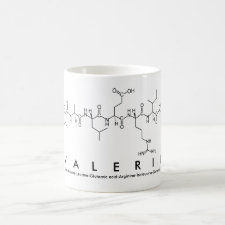
Authors: Svoboda P, Combes A, Petit J, Nováková L, Pichon V
Article Title: Synthesis of a molecularly imprinted sorbent for selective solid-phase extraction of β-N-methylamino-L-alanine.
Publication date: 2015
Journal: Talanta
Volume: 144
Page numbers: 1021-1029.
DOI: 10.1016/j.talanta.2015.07.052
Abstract: The aim of the work was to synthesize a molecularly imprinted material for the selective solid-phase extraction (SPE) of β-N-methylamino-L-alanine (l-2-amino-3-methylpropionic acid; BMAA) from cyanobacterial extracts. BMAA and its structural analogs that can be used as template are small, polar and hydrophilic molecules. These molecules are poorly soluble in organic solvents that are commonly used for the synthesis of acrylic-based polymers. Therefore, a sol gel approach was chosen to carry out the synthesis and the resulting sorbents were evaluated with different extraction procedures in order to determine their ability to selectively retain BMAA. The presence of imprinted cavities in the sorbent was demonstrated by comparing elution profiles obtained by using molecularly imprinted silica (MIS) and non-imprinted silica (NIS) as a control. The molecularly imprinted solid-phase extraction (MISPE) procedure was first developed in a pure medium (acetonitrile) and further optimized for the treatment of cyanobacterial samples. It was characterized by high elution recoveries (89% and 77% respectively in pure and in real media).The repeatability of the extraction procedure in pure medium, in real medium and the reproducibility of MIS synthesis all expressed as RSD values of extraction recovery of BMAA were equal to 3%, 12% and 5%, respectively. A MIS capacity of 0.34 μmol/g was measured. The matrix effects, which affected the quantification of BMAA when employing a mixed mode sorbent, were completely removed by adding a clean-up step of the mixed-mode sorbent extract on the MIS
Template and target information: β-N-methylamino-l-alanine, l-2-amino-3-methylpropionic acid, BMAA
Author keywords: Molecularly imprinted silica, sol-gel, solid phase extraction, β-N-methylamino-l-alanine



Join the Society for Molecular Imprinting

New items RSS feed
Sign-up for e-mail updates:
Choose between receiving an occasional newsletter or more frequent e-mail alerts.
Click here to go to the sign-up page.
Is your name elemental or peptidic? Enter your name and find out by clicking either of the buttons below!
Other products you may like:
 MIPdatabase
MIPdatabase









